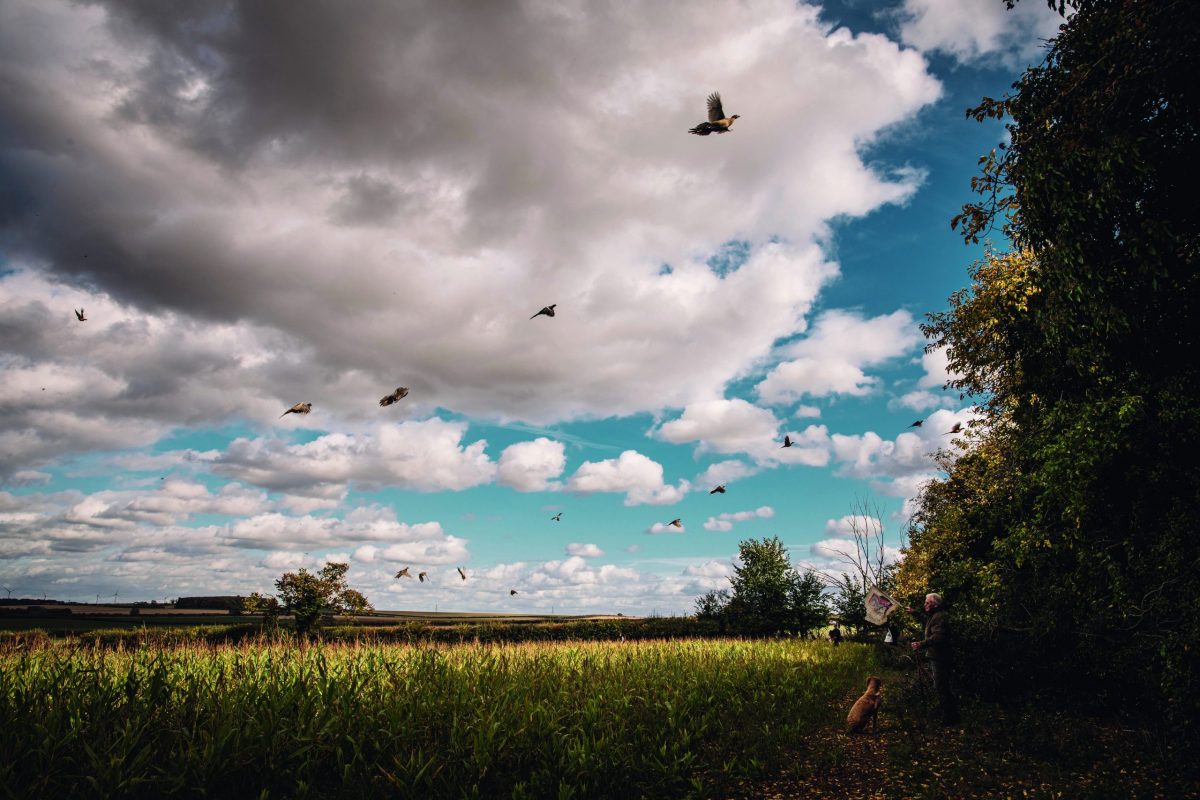Winter driven shooting – how to adapt peg placement to mild weather
The continuing mild weather calls for some changes to peg placement, explains Liam Bell

The unseasonably mild weather means leaf cover seems to be denser than usual for this time of year
We are predominantly a woodland shoot and, while we do have game strips planted against or behind most of our drives, the birds are more usually driven across our valleys out of the trees. Trees that in a more normal year would have lost most of their leaves by now.
The Guns are standing in the open for most of our drives, so having leaves on the trees isn’t an issue in those cases, but one or two pegs are in rides at the bottom of wooded valleys. On other drives, we have back-guns in clearings among the trees behind the main line. Both of these make for interesting and exciting shooting, but only if the Guns can see the birds. Were we to position Guns in either of those places now, it would be almost impossible for them to see the birds long enough to get off a shot.
This means we have had to juggle things about until more of the leaves are off the trees. In the valley bottoms, where we have had a fairly straight line of evenly spaced pegs in the past, we now have a line that curves between the gaps in the trees and pegs that are placed in the gaps rather than an equal distance apart. It sort of ebbs and flows, and does take some getting used to, but there is little point placing Guns under the trees when they are still almost in full leaf. We are not about to start cutting down and pruning perfectly decent trees for the sake of an evenly spaced straight line.
The Guns will understand why they are closer to some of their neighbours and out of line or further away from others, and will probably notice little, if any, difference. It would, however, be wise to flag up the changes if you have regular Guns who are going to question why they can’t stand where they have always stood, or Guns who will miss the newly placed pegs and end up in completely the wrong place.
Edge of the action
Where the view of our back-guns is restricted by the canopy, we have either had to move them to another gap between the trees where they can see more, or shoehorn them into the front line with the other Guns. Neither option is ideal, as the new gap is rarely in the right place or on the principal line of flight, and the main Gun line is usually pretty tight. Extending the line does give them a better chance of being in the shooting than being stood back among the trees and unable to see anything, but it also pushes the end Guns right to the edges of the action.

Pegs may need to be moved to allow for thicker tree canopies — avoid thinning or pruning vegetation
I would caution against thinning more trees and making the gaps for the back-guns bigger. Although it would seem to be an obvious solution, the problems caused by the leaves
are temporary, and a gap that is bigger than needed could lead to a drive being overshot later on in the season when the Guns can see what’s coming.
If you don’t want to or haven’t got the time to put your pegs out twice, you could ask someone to place the Guns for you. But I would still recommend a marker of sorts to stop the wanderers and creepers who are inclined to drift off their peg and follow the shooting.
An owner of a shoot I have been to in Wiltshire always places the Guns, but still uses a peg to ‘ground’ them and stop the wandering. He pushes a cattle-size electric-fence post with a number on into the ground to anchor the Guns where he wants them. He says the Guns are also fans, and find the posts useful for hanging gun slips on and looping their dog leads over to stop them running-in.
Head height
The second problem with having too many leaves on the trees is that they will tire the birds out if they have to battle through them when they are flushed. An early-season pheasant will have enough energy to flap and climb for one and a half to two seconds at most. If they have used their energy up twisting and turning, and battering themselves against the branches looking for an opening in the canopy, they will come out of the wood, plane down and glide past the Guns at head height — regardless of how high a bank they were flushed from. And no one wants to shoot tired and struggling birds.
This is why it is so important that the beating team takes the drives as steadily as they can. Slow, steady beating gives birds time to get to the flushing points, where there should be more room for them to get out. Perhaps not as much as when the leaves are properly off, but more than in the thick of a wood where the canopy is still pretty much closed over.
Ask the beaters to keep the noise down, too. Nothing makes birds clap down — and stops them running forward — more than shouting and talking. Dog whistles and the tapping of sticks is fine, but the human voice slows them down and will make them reluctant to move. Once the birds are at the flushing point, a bit of talking and banter between the beaters doesn’t make much difference, as long it isn’t so loud that it annoys the Guns or drowns out the keeper’s instructions.

Ask the beating team to keep the noise down, as shouting and talking can make birds reluctant to move








